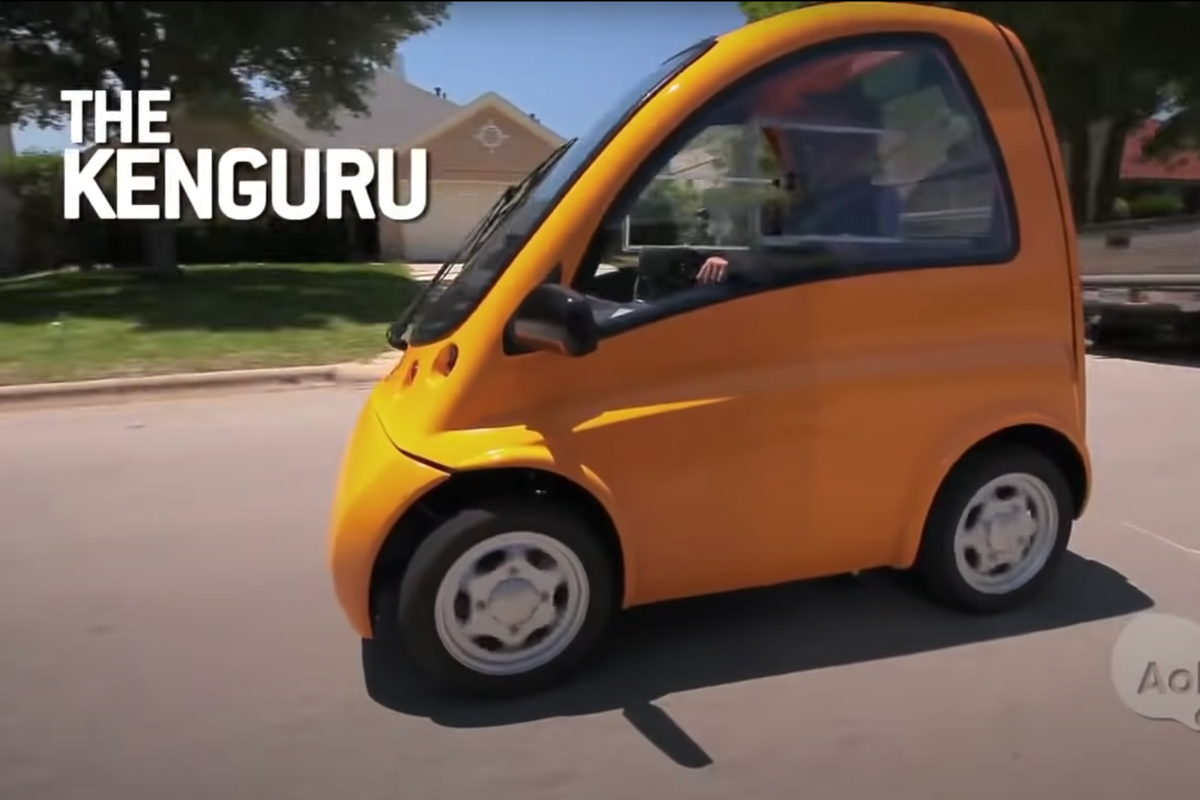The Kenguru is the first electric vehicle to truly put wheelchair users in the driver's seat

The Kengura featured on Translogic.
We live in a modern world full of technological wonders. Just look at the way we get from A to B—electric vehicles that need no gas, Teslas that drive themselves … it’s an interesting time to be alive.
And yet, even with all these advancements, transportation remains an issue for many drivers with disabilities. Though many vehicles offer wheelchair access, for example, it can still take considerable time and effort to simply get in and out.
That’s where the Kenguru comes in.
The Kenguru (pronounced like Australia’s most popular marsupial) is not just another smart car. It’s making a splash in the electric vehicle world for being the very first EV created specifically with wheelchair users in mind.
Instead of multiple side doors, the Kenguru has one large door that takes up the entire back panel. With the punch of a button, the door opens for direct access. No seats, no trunk. Just freedom.
Driving is equally simple. Motorcycle-style handlebars replace the traditional steering wheel, and the company is currently working on a joystick version for those who have more limited upper body strength. There are only three gears: forward, neutral and reverse. And, according to The Next Web, it’s technically considered an electric scooter, meaning there’s no driver’s license required to operate it, making things even more accessible.
The Kenguru only clocks about 25 mph and has a 60 mile range, but speed and distance aren’t really the main point—inclusivity is. With this kind of vehicle, drivers can easily enjoy a quick trip to the store, an impromptu movie, meeting with friends … simple pleasures that are easily taken for granted.
Plus, there’s the Kenguru’s affordability. An article for Startup Selfie reports that where the car is priced around $25,000, buyers qualify for a federal “green incentive,” which offers a rebate discount. Some drivers will qualify for the “vocational rehabilitation incentive,” if the Kenguru is considered a work vehicle. In other words, these vehicles could shoot down to anywhere from $20,000 to a flat zero.
Stacy Zoern, an attorney in Texas, discovered Kenguru after purchasing—then totaling—a fully modified $80,000 van … all within only a few months of having it. Yikes.
Zoern tells Translogic that for some time after the accident, she depended on others to get around. On a whim, she searched the internet to see if the technology had improved over the years. She was pleased to discover that it had.
There was only one issue: The Hungary-based company that developed the Kenguru lost its bank loan and was relying solely on fundraising. But Zoern was so impassioned by what Kengura had to offer disabled drivers, she decided to give them a call, and the rest appears to be a partnership destined for success.
Zoern joined forces with Istvan Kissaroslaki (the vehicle’s original creator) to move the company to Austin, Texas, and has worked diligently to gain investors. By 2014, Kengurus were fully produced in the U.S. You might have already seen one cruising nearby.
And beyond supply chain challenges (not having the funding to build enough cars for such a heavy demand), Zoern says that the plan is for Kenguru to go worldwide, with dealerships in Spain and Germany showing interest.
This is an exciting example of how technology can help connect us—all of us—to life, and make the world a better place.
- Man who now uses a wheelchair explains ableism, and it's a must ... ›
- Students design a wheelchair attachment so dad can take son on a ... ›
- Wheelchair user shares advice for interacting with them in public ... ›
- French company creates exoskeleton for wheelchair users to walk - Upworthy ›
- Georgia launches all-terrain wheelchairs in 11 of its state parks - Upworthy ›
- Electric cars reduce asthma attacks - Upworthy ›
- Electric cars reduce asthma attacks - Upworthy ›

